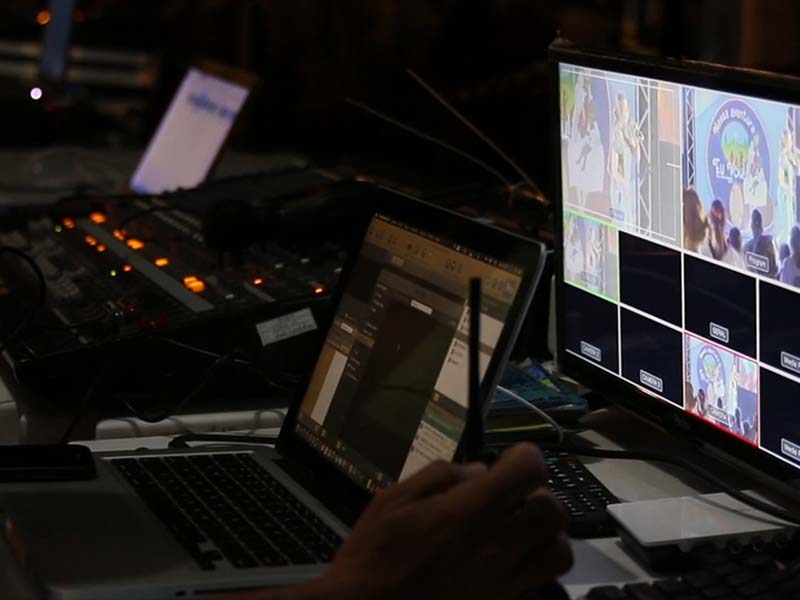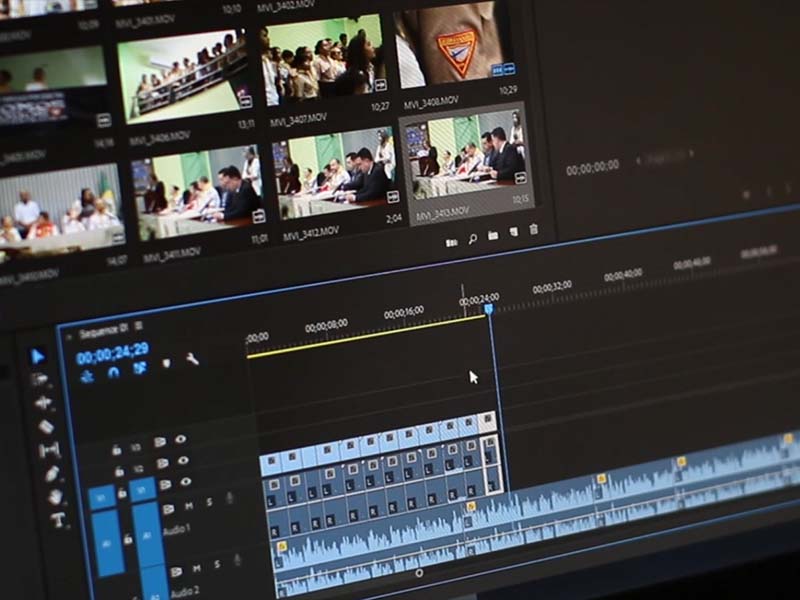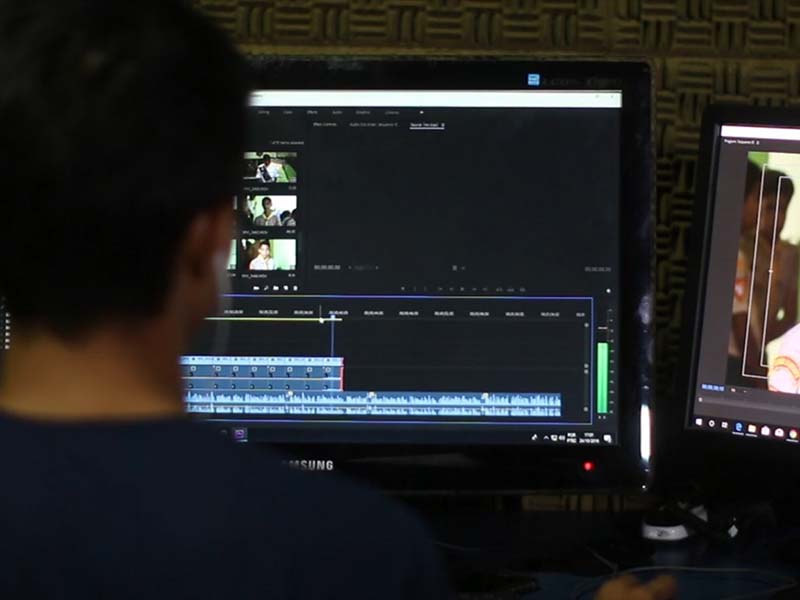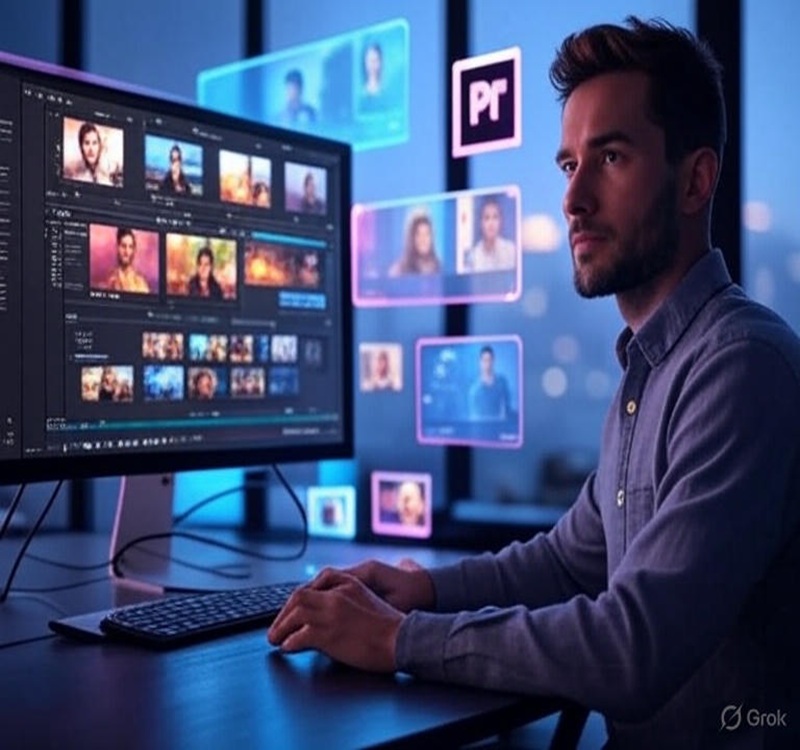Mastering the Art of Video Editing
Have you ever watched a video that left you speechless, with every scene pulling you deeper into its story? That’s the magic of video editing—a craft that turns raw moments into unforgettable narratives. Whether you’re a dreamer stitching together your first vlog, a small business owner creating scroll-stopping social media content, or a pro chasing cinematic perfection, Mastering the Art of Video Editing is your path to bringing stories to life. Join us as we share heartfelt tips, powerful tools like Pixc Retouch, and creative techniques to spark your imagination.
Video editing is more than just a technical process; it’s an art form that brings stories to life. Whether you’re crafting a cinematic masterpiece, creating content for social media, or working on a personal project, mastering video editing can transform your footage into compelling narratives. In this blog, we’ll explore essential tips, tools, and techniques to elevate your video editing skills. Ready to make your videos shine? Let’s dive in!
Why Video Editing Matters

Video editing is the backbone of storytelling in the digital age. It’s not just about trimming clips or adding filters—it’s about shaping emotions, pacing narratives, and guiding your audience’s experience. A well-edited video can turn mundane footage into a masterpiece, while poor editing can make even the best shots feel flat. With platforms like YouTube, Instagram, and TikTok driving content consumption, mastering video editing is a skill that opens doors for creators, marketers, and filmmakers alike.
The demand for video content is soaring. According to Wyzowl’s 2024 Video Marketing Statistics, 91% of businesses use video as a marketing tool, and 96% of consumers prefer watching videos to learn about products. This means editors who can craft compelling stories have a competitive edge. Whether you’re a beginner or a pro, honing this craft can set you apart.
The Basics of Video Editing
Understanding the Workflow
A typical video editing workflow includes:
- Importing Footage: Transfer your raw video files from your camera or device to your editing software.
- Organizing: Arrange your clips in a logical order, create folders, and label your files for easy access.
- Cutting and Trimming: Remove unwanted parts, and trim your clips to focus on the essential parts of your story.
- Adding Effects and Transitions: Enhance your video with visual effects, transitions, and overlays.
- Color Correction and Grading: Adjust the colors and tones to achieve a consistent and appealing look.
Essential Tools for Video Editing
Software
- Adobe Premiere Pro: A professional-grade video editor known for its versatility and integration with other Adobe products.
- Final Cut Pro X: Popular among Mac users, offering powerful tools and a user-friendly interface.
- DaVinci Resolve: Renowned for its advanced color grading capabilities and robust free version.
Advanced Video Editing Techniques and Creative Ideas

Motion Graphics and Animation
Integrating motion graphics and animation can significantly enhance your video. Here are some ways:
- Titles and Lower Thirds: Use animated text to introduce your video or provide additional information on screen.
- Infographics: Visualize data with animated charts and graphs to make complex information more digestible.
- Kinetic Typography: Animate your text in sync with audio for a dynamic and engaging effect.
Green Screen and Chroma Keying
Green screen techniques allow you to superimpose subjects onto different backgrounds. This is particularly useful for:
- Virtual Sets: Place your subjects in entirely new environments without leaving the studio.
- Special Effects: Create stunning visual effects by combining live-action with digital elements.
The Foundations of Video Editing

Understanding the Editing Workflow
Every great edit starts with a clear process. Think of it as building a house: you need a strong foundation before adding the finishing touches. Here’s how a typical workflow unfolds.
Once organized, it’s time to cut and trim. This is where you carve away excess footage to focus on the heart of your story. Don’t be afraid to be ruthless—every second counts in holding your viewer’s attention. After trimming, add transitions and effects to smooth the flow. Finally, color correction and grading give your video a polished, cohesive look. Tools like DaVinci Resolve excel here, offering precise control over tones and moods.
Choosing the Right Software
Your editing software is your creative partner, so choose wisely. The market offers options for every skill level and budget. Adobe Premiere Pro is a go-to for professionals, with its robust features and integration with Adobe’s ecosystem. It’s ideal for complex projects but has a steep learning curve. For Mac users, Final Cut Pro X offers a sleek interface and powerful tools, perfect for streamlined workflows. If you’re on a budget, DaVinci Resolve provides professional-grade features for free, with unmatched color grading capabilities.
Software | Best For | Price | Key Features |
Adobe Premiere Pro | Professionals | $20.99/month | Multi-track editing, Adobe integration |
Final Cut Pro X | Mac users | $299.99 (one-time) | Magnetic timeline, fast rendering |
DaVinci Resolve | Color grading enthusiasts | Free (Pro: $295) | Advanced color tools, robust free version |
iMovie | Beginners | Free (Mac) | Simple interface, basic effects |
Adobe Premiere Rush | Mobile creators | Free (Premium: $9.99/month) | Cloud sync, mobile editing |
Staying Updated with Trends and Technology
Staying updated can help you keep your work fresh and relevant.
Trends
- Vertical Video: With the rise of mobile viewing, vertical videos are becoming more popular, especially on platforms like Instagram and TikTok.
- Interactive Videos: Engage viewers by allowing them to make choices that affect the video’s outcome.
- 360-Degree Video: Offer immersive experiences with 360-degree footage, enabling viewers to explore scenes interactively.
Technology
- AI and Machine Learning: Tools like Adobe Sensei are bringing AI into video editing, automating tasks like cutting, tagging, and color correction.
- 4K and Beyond: As display technology advances, higher resolution videos (4K, 8K) are becoming standard. Ensure your editing setup can handle these large files.
- Cloud-Based Editing: Services like Adobe Premiere Rush and Frame.io allow for remote collaboration, making it easier to work with teams from anywhere in the world.
Resources for Learning and Inspiration
Online Courses
- Lynda.com/LinkedIn Learning: Offers comprehensive courses on all major video editing software.
- Udemy: Features a wide range of courses for beginners to advanced editors.
- Skillshare: Provides creative classes on video editing, often taught by industry professionals.
Learning Resources to Master Your Craft
Continuous learning is key to mastering the Art of Video Editing. Platforms like LinkedIn Learning offer in-depth courses on Premiere Pro and Final Cut. Udemy has affordable, project-based tutorials for all levels. For creative inspiration, Skillshare connects you with industry pros sharing real-world tips. I’ve taken Skillshare classes that transformed how I approach color grading.
YouTube channels like Cinecom.net and Premiere Basics offer free, actionable tutorials. Join online communities on Reddit or X to share tips and get feedback. I’ve found these spaces invaluable for troubleshooting and discovering new techniques.
FAQs About Mastering the Art of Video Editing
What’s the best video editing software for beginners?
iMovie (free for Mac) and Adobe Premiere Rush are great starting points due to their intuitive interfaces. DaVinci Resolve’s free version is also excellent for those ready to dive deeper.
How long does it take to master video editing?
It depends on your dedication. Basic skills can take a few months, but mastering Video Editing often takes years of practice. Consistent projects and learning accelerate growth.
Can I edit videos on a budget?
Absolutely! Free tools like DaVinci Resolve and HitFilm Express offer professional features. Pair them with free stock footage from Pexels to keep costs low.
How do I make my videos stand out?
Focus on storytelling, pacing, and unique visuals. Use music from Epidemic Sound to set the mood, and experiment with trends like vertical video or kinetic typography.
What’s the role of color grading in video editing?
Color grading sets the mood and enhances visual consistency. Tools like DaVinci Resolve’s color wheels let you adjust tones to evoke emotions, like warm hues for nostalgia or cool tones for drama.
Conclusion: Unleash Your Creative Vision
Your journey to Mastering the Art of Video Editing is more than a skill—it’s a chance to share your unique voice with the world. Every cut, transition, and color grade is a step toward crafting stories that inspire, entertain, and connect. Reflecting on my path, from late-night edits to creating videos that moved audiences, I’ve seen how persistence and creativity can transform raw footage into magic.
Don’t wait for the perfect moment—grab your camera, open your software, and start telling your story today. Share your latest project in the comments below, join our video editing community for exclusive tips, or kickstart your journey with a free trial of Adobe Premiere Pro. What’s the one editing trick you’re excited to try? Let’s create something extraordinary together!




